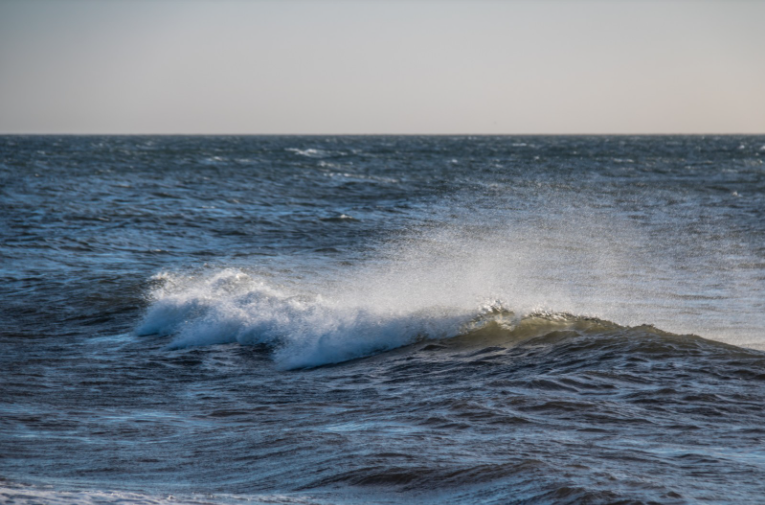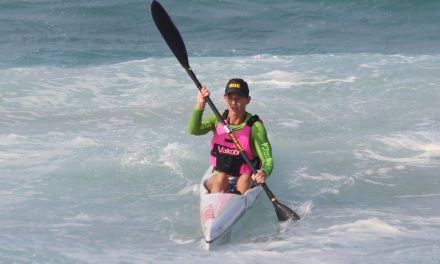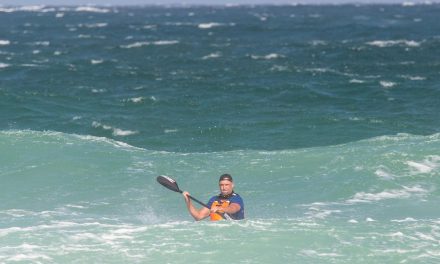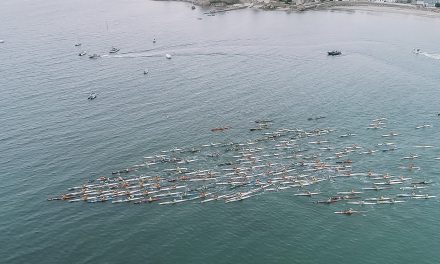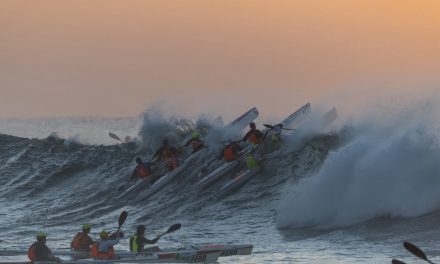SAFETY IN SPOTLIGHT AFTER PADDLING DEATH IN CAPE TOWN
Safety must always come first in surfski paddling.
It can’t be put any simpler than that.
While, as a community, we will always celebrate pumping downwind sessions, unique ocean experiences and conquering challenging races, we must not overlook the importance of protecting ourselves, and others, out on the water.
The narrow line between ecstasy and tragedy was again painted bare last week, when a paddler in South Africa was found dead, after going missing at sea.
He was equipped with a leg leash and PFD.
“We carried out an extensive search and we left no stone unturned to find the man who we believed to be missing at sea,” a spokesperson from the National Sea Rescue Institute said.
“We had done all we could and could do nothing more and our condolences go to family and friends.”
Tragically, he leaves behind a wife and son.
Rob Mousley from www.surfski.info picks up the story, reflecting on the vitality of safety and what lessons can be learned from this heartbreaking incident.
Accident reports are easy to write when the story ends happily, but this one didn’t and it’s with a very heavy heart that I’m writing this, with a view to learning what we can from it.
WHAT HAPPENED?
At 3pm on Friday February 26, a 46-year-old set off on his own to go for his regular 30-minute paddle along Cape Town’s Atlantic coastline.
He was equipped with a PFD, a leash and he was paddling a Fenn Blue-Fin S.
He had his keys in a waterproof pouch but didn’t have his mobile phone or any other communications gear.
At just before 7pm, the National Sea Rescue Institute was alerted that he was missing and that it was suspected that he might still be at sea.
The NSRI launched both land and sea searches, with three sea rescue craft conducting a search between Oudekraal and Table Bay until midnight.
They resumed the search at dawn, assisted by the EMS/AMS Skymed rescue helicopter, which finally found the man’s body, still tethered to the ski on Saturday morning, some 4.5 nautical miles (8.3km west of Bantry Point.)
DECEPTIVE CONDITIONS
The southeaster blows directly offshore on the Atlantic coastline, and it can appear deceptively calm in the lee of the shore, close to the rocks.
But a few hundred meters out to sea, the wind, accelerating down the mountainside, can be lashing the water with squalls of 50kt or more.
And of course, those howling squalls can arrive without warning, as the southeaster grows in strength.
So, it’s possible for a paddler to feel safe in the sheltered water close to the rocks, but in extreme danger from the maelstrom of wind and spray, just a few hundred meters offshore.
Adding to the risk is the water temperature.
Strong southeasters cause upwellings of cold water: as the warmer surface layer is blown offshore, it’s replaced by frigid water flowing up from the deep.
On Saturday morning, the water temperature at Bakoven was 8.5C.
THE AFTERMATH
The only possible upside to this tragedy is to consider the lessons that can be learned.
There are two key factors in this tragedy:
- The weather conditions
- Inability to call for help
WEATHER CONDITIONS
Paddlers frequently neglect to consider weather conditions – and specifically how quickly they can change.
For example, our “Reverse Miller’s Run” from Fish Hoek to Miller’s Point is often regarded as the “soft” version of the route because the waves are smaller – and only start some distance into the run.
But the NW blows slightly offshore, and on rare occasions (it’s happened only a couple of times to me) the wind sometimes swings directly offshore some 2km from Miller’s Point and increases dramatically in strength.
Then you have to capable of paddling diagonally side-on to the wind and waves.
It’s not just the weather forecast that you need to be aware of, but the water temperature, the local conditions (example: the wind funneling down the side of a mountain) and possibility of unexpected changes.
CALLING FOR HELP
There’s a strong ethos (and rightly so) among the surfski community towards the idea of self-rescue.
But anyone can find themselves in trouble. While accidents frequently involve novices, I know personally of a number of incidents where very experienced paddlers too have found themselves in potentially fatal situations, where self-rescue is impossible and it’s necessary to call for help.
TRACKING APPS AND COMMUNICATION GEAR
The SafeTrx tracker app for mobile phones is a zero-cost option, directly supported by the NSRI.
When you trigger an emergency on the app, it connects directly with the NSRI’s operations room.
SafeTrx has already been used successfully in numerous rescues around South Africa.
Just like every other piece of equipment, however, it’s not a 100% guaranteed silver bullet and you’ll increase your odds of survival with every other piece of safety gear that you carry.
Click here for surfski.info’s general discussion of surfski safety gear
MINIMISING THE RISK
By its nature, surfski paddling will never be a 100% risk-free sport, but we can minimize the risk by making better decisions.
My hope is that this awful tragedy might have at least some positive outcomes in helping us to focus on those decisions.
Our sincere condolences to the paddler’s friends and loved ones.

